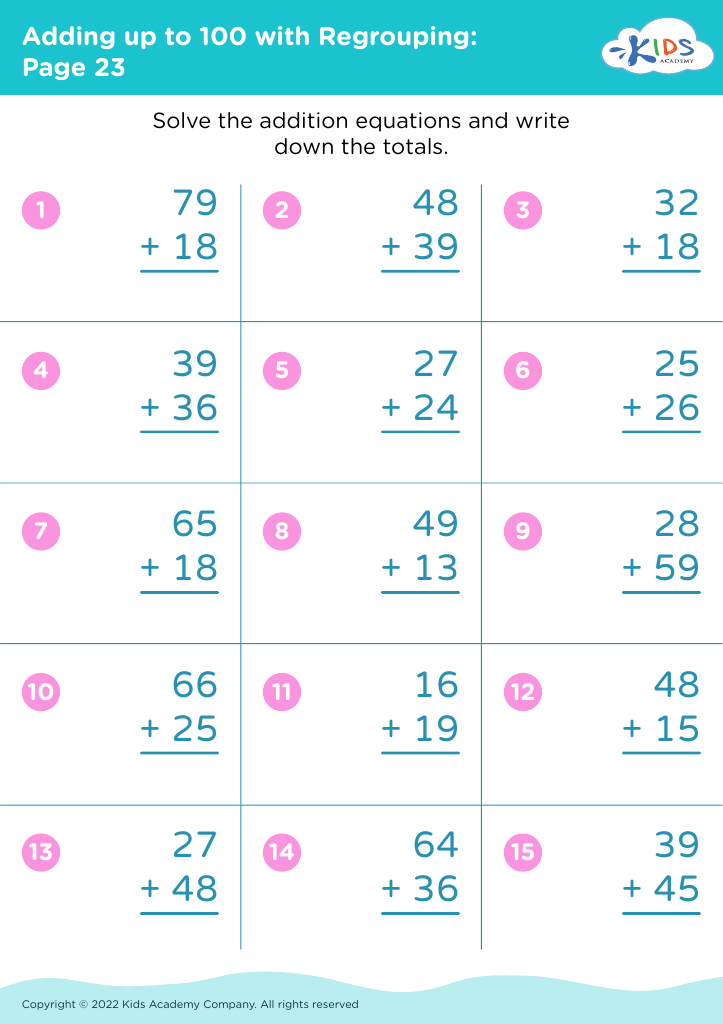Identify triangles Worksheets for Kids
1 filtered results
-
From - To
Question/Answer
What are some effective activities to train students’ Identify triangles skill when teaching them about Adding up to 100 with Regrouping?
To train students in identifying triangles while teaching them about adding up to 100 with regrouping, consider activities like using geometric shape manipulatives for hands-on practice, incorporating triangle identification into addition word problems, and creating a matching game where students pair triangle types with sums that regroup to make 100. These activities integrate geometry with arithmetic for comprehensive skill development.
How does the mastery of the Identify triangles skill affect a student's performance at an early age?
Mastery of the Identify triangles skill at an early age significantly enhances a student's geometry foundation, contributing to better spatial reasoning, problem-solving abilities, and understanding of more complex mathematical concepts. This early competence fosters confidence in math, positively affecting overall academic performance and interest in STEM fields.
Why is the Identify triangles skill important for Grade 2 students?
The Identify triangles skill is important for Grade 2 students as it introduces them to basic geometric shapes and their properties, lays the foundation for understanding more complex shapes and geometry later on, enhances spatial awareness, and improves problem-solving and reasoning abilities. It's a crucial step in developing their mathematical thinking and visual perception skills.




.jpg)








